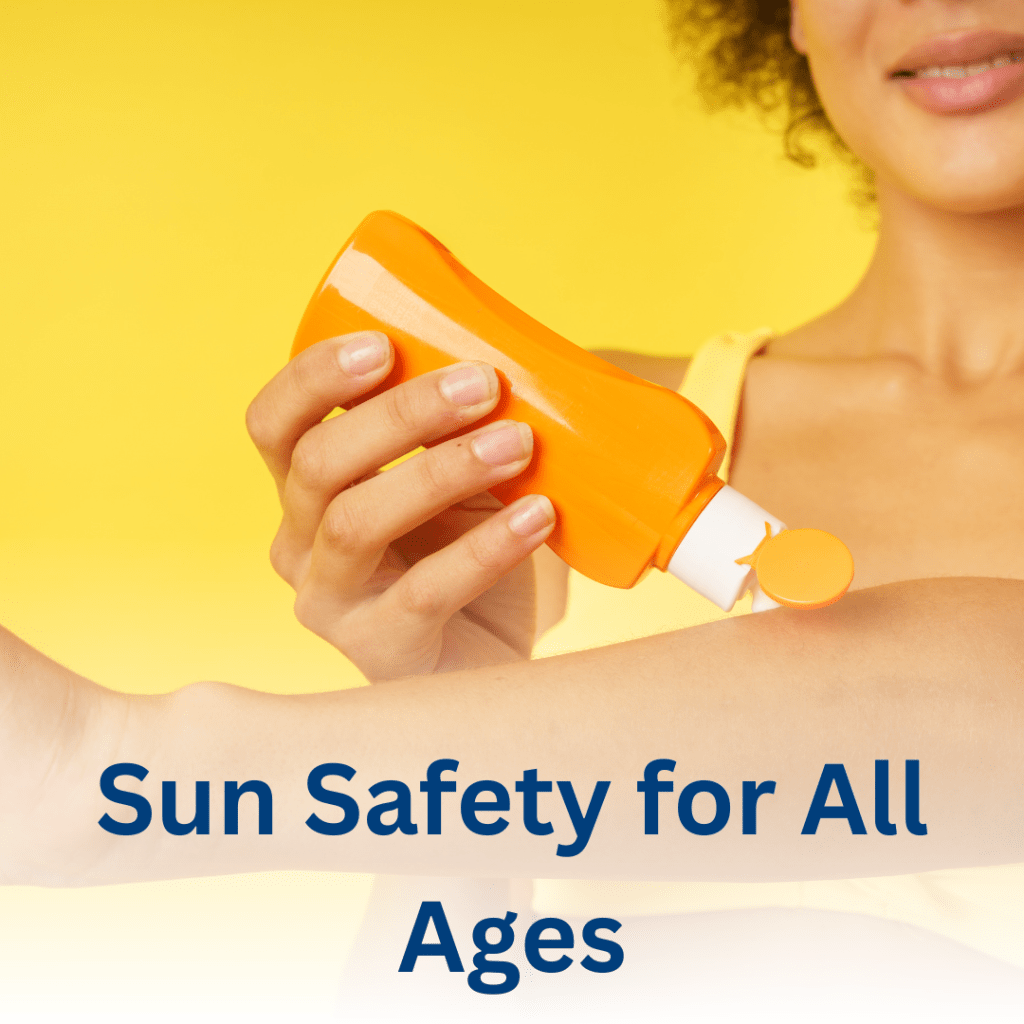
While UV Safety Month brings sun protection into focus each July, the risks posed by ultraviolet (UV) radiation demand year-round attention. From childhood through older adulthood, UV exposure is a cumulative threat that increases the likelihood of skin cancer, accelerates skin aging, and raises healthcare costs.
Sun protection isn’t just for the summer; it’s a critical year-round component of preventive care for patients of all ages. While UV Safety Month offers a spotlight in July, healthcare leaders can enhance outcomes by integrating sun safety into routine patient education and risk assessments, especially among vulnerable groups like children, outdoor workers, and the immunocompromised.
A Lifespan Approach to UV Protection
The health risks linked to ultraviolet (UV) radiation begin early and accumulate over time. According to the National Institute for Health and Care Research (NIHR), early exposure dramatically increases the likelihood of skin cancer later in life. For children and adolescents, building good sun habits (e.g., wearing protective clothing and using broad-spectrum sunscreen) can reduce future healthcare costs and improve long-term skin health outcomes.
Adults, especially those who work outdoors, face chronic exposure. Atmospheric studies from the Atmosphere journal highlight how elevated UV levels persist throughout the year in some regions, posing a constant threat. Employers and providers alike should collaborate on strategies that emphasize sunscreen availability, protective gear, and education tailored to worksite needs.
Older adults and immunocompromised patients are more vulnerable to the effects of cumulative sun damage. Research from Philadelphia College of Osteopathic Medicine (PCOM) stresses the importance of accessible screenings and public outreach to these high-risk populations, noting that routine reminders during annual exams can aid early detection.
Targeted Prevention, Scalable Strategies
Integrating UV education doesn’t require a complete overhaul of clinical workflows. Simple steps, like adding sun safety questions to wellness intake forms or distributing patient-facing materials from the American Academy of Dermatology (AAD) and the CDC, can have outsized impacts. Tailored toolkits allow for age-appropriate messaging and enable healthcare teams to personalize guidance based on risk profile and lifestyle.
Community partnerships also play a role. Clinics, schools, and local businesses can work together to provide shade structures, free sunscreen dispensers, and educational workshops that extend the reach of preventive messaging beyond the exam room.
Key Takeaways
- UV exposure is a lifelong risk, beginning in early childhood and escalating through adulthood, particularly for outdoor workers, older adults, and the immunocompromised.
- Integrating sun safety into clinical workflows (through intake forms, screenings, and educational materials) can reduce future skin cancer risk and improve population health outcomes.
Scalable strategies like community partnerships and tailored outreach extend the impact of preventive efforts beyond the clinic, promoting year-round sun safety for all ages.
FAQs
Why is it important to tailor sun safety messages by age group?
Different populations face distinct risks. For example, children are more susceptible to sunburns, while seniors may experience faster skin damage due to age-related changes. Tailored messaging ensures relevance and improves adherence.How can healthcare providers address sun safety in high-risk workers?
Providers can screen for sun-related occupational risks, recommend sun-protective gear, and advocate for employer policies that allow scheduled shade breaks and sunscreen use.Are there effective strategies for reaching immunocompromised patients?
Yes. Incorporating UV risk discussions into treatment plans, especially for patients undergoing immunosuppressive therapy, helps emphasize the need for consistent sun protection and early skin monitoring.
Each week, we email a summary along with links to our newest articles and resources. From time to time, we also send urgent news updates with important, time-sensitive details.
Please fill out the form to subscribe.
Note: We do not share our email subscriber information and you can unsubscribe at any time.
|
|
Thank you for Signing Up |

Sources
- NIHR Open Research
The effects of sunlight exposure on mortality: a systematic review of epidemiological studies
https://openresearch.nihr.ac.uk/articles/5-51 - Philadelphia Collee of Osteopathic Medicine (PCOM)
Sun Safety in Rural Youth: Exploring Knowledge, Preferences, and Behaviors
https://digitalcommons.pcom.edu/research_day/research_day_SGA_2025/researchSGA2025/26/ - MDPI Atmosphere
Ultraviolet Radiation Knowledge and Exposure Practices Among Serbian High School Students: Results of a Nationwide Survey
https://www.researchgate.net/publication/392282857_Ultraviolet_Radiation_Knowledge_and_Exposure_Practices_Among_Serbian_High_School_Students_Results_of_a_Nationwide_Survey
Previous Articles
Partner with BHM Healthcare Solutions
With over 20 years in the industry, BHM Healthcare Solutions is committed to providing consulting and review services that help streamline clinical, financial, and operational processes to improve care delivery and organizational performance.
We bring the expertise, strategy, and capacity that healthcare organizations need to navigate today’s challenges – so they can focus on helping others.
Are you ready to make the shift to a more effective process?
